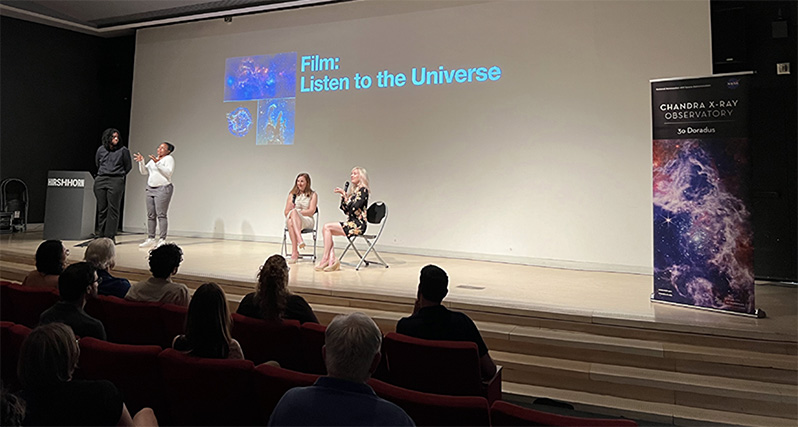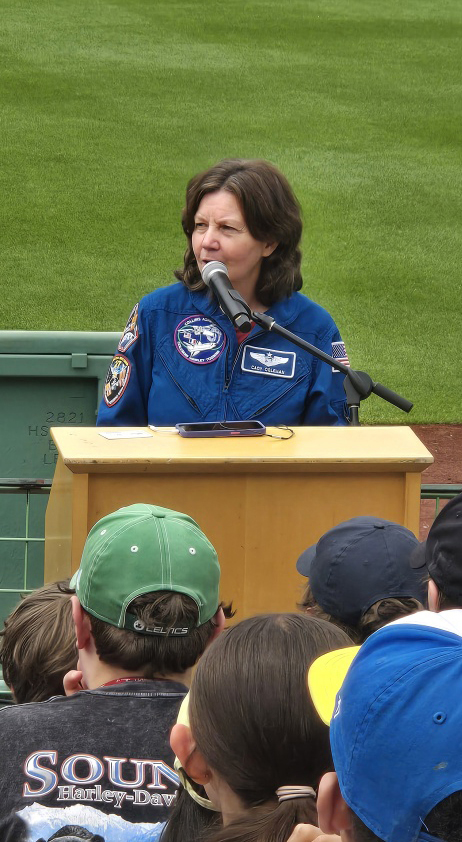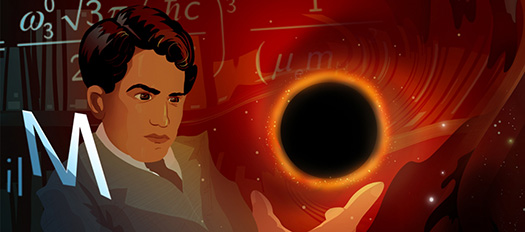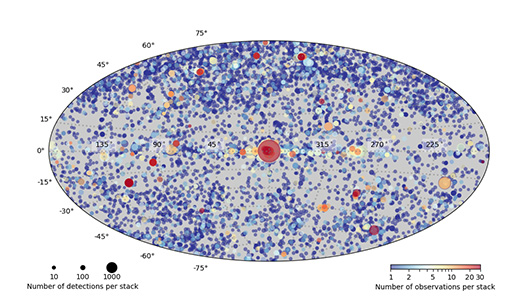25 Images to Celebrate NASA's Chandra 25th Anniversary
Submitted by chandra on Mon, 2024-07-22 12:04This montage contains 25 new images with data from NASA’s Chandra X-ray Observatory that is being released to commemorate the telescope’s 25th anniversary in space, as described in our latest press release. Since its launch into space on July 23, 1999, Chandra has been NASA’s flagship mission for X-ray astronomy in its fleet of “Great Observatories.” Chandra discovers exotic new phenomena and examines old mysteries, looking at objects within our own Solar System out to nearly the edge of the observable Universe.
Chandra Images on Display in Washington, DC Metro Stations
Submitted by chandra on Thu, 2024-07-18 14:00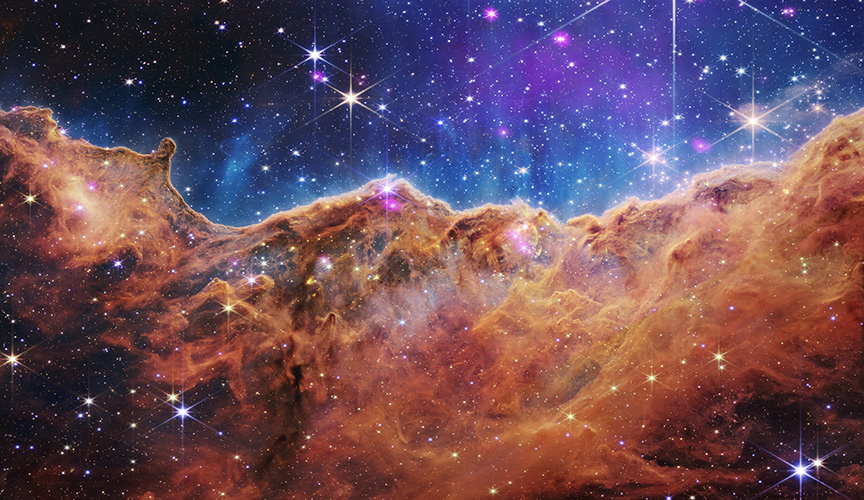
NGC 3324
(Credit: X-ray: NASA/CXC/SAO; IR (Spitzer): NASA/JPL-Caltech; IR (Webb): NASA/ESA/CSA/STScI)
If you happen to be riding the Metro subway system in Washington, DC over the next few months, take a moment to check out the video displays. On six stations, images from NASA’s Chandra X-ray Observatory will be featured as a cosmic distraction while you wait for the next train.
The Inside Story of How an Interstellar Jam Session Came to the Las Vegas Sphere
Submitted by chandra on Thu, 2024-07-11 10:11The guest blogger for this post is our own Dr. Kimberly Arcand, Visualization Lead and Emerging Technology Scientist for the Chandra X-ray Center. Kim has been working with Chandra since before the telescope’s launch and has been at the forefront of bringing Chandra data to the public in innovative ways. Some of her recent collaborations include the Chandra sonification project. In addition to being a NASA project, Chandra is also part of the Smithsonian Institution (the telescope is operated by the Smithsonian Astrophysical Observatory in Cambridge, Mass.) That connection led to a new collaboration, described below, between Kim and Mickey Hart, the Grateful Dead, and Dead and Company, drummer and artist.
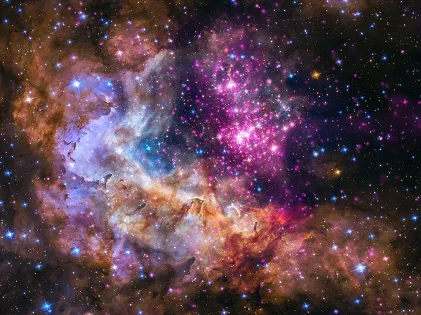
Westerlund 2
Credit: NASA/CXC/SAO & NASA/STScI
There is an inherent connection between music and space. There’s no rift between science and art, just a riff. They are two sides of the same coin, more alike than different.
Chandra & CfA Shines on National Mall & Across the Smithsonian
Submitted by chandra on Fri, 2024-06-28 13:34On Saturday, June 22, Chandra’s 25th anniversary shone as part of the Smithsonian’s Cosmic Journey initiative, with events across SI's Solstice Saturday. During Solstice Saturday, SI museums on the Mall stay open late and host special programs and performances.
The event drew record-breaking audiences with many tens of thousands of people over the course of the day, braving the DC heat to enjoy a day and evening of astronomy.
Chandra content was featured at multiple museums including Air & Space, Natural History, Arts & Industries, African American History & Culture, and Hirshhorn, for example. The installations included Chandra sonifications and large scaled image projects, trivia, handouts, 3D prints, and a documentary world premiere of "Listen to the Universe" from Chandra and NASA+.
A Birthday Letter to Chandra on its 25th
Submitted by chandra on Wed, 2024-06-19 11:16Our guest blogger this week is Jessica Jacyno. Jacyno is an engineering student at Brown University from Sweetwater, Tennessee. She is passionate about the interplay between international policy and science.
As an engineering student, I am taught to take advantage of the laws of physics to accomplish humanity’s goals. Before that though I am a student of the cosmos, intent on staring up at the night sky to unravel the secrets of our origins. Until taking classes on astrophysics at university, my focus had always been on the results, not the tools used to achieve such results. Telescopes always seemed like complex black boxes that were out of my paygrade to understand. After all, if they were producing discoveries why did I care how they were found?
However, learning about these means of discovery is akin to learning about the history of the past to inform our present. Not only is the technology deeply intriguing (and not as unfathomable as you would think), but there is much to be learned from the way in which complex problems like space visualization are approached and solved. These approaches and solutions should serve to inform every type of problem solving across disciplines that requires critical thinking.
Red Sox NASA STEM Day & Chandra’s 25th anniversary
Submitted by chandra on Tue, 2024-06-11 09:57Before the first pitch of the Red Sox game on June 5th, over 3,000 local New England students were treated to a morning of STEM (“science, technology, engineering and math”) programs for the Red Sox NASA STEM Day. As local representatives of NASA in New England, the Smithsonian Astrophysical Observatory (SAO), including Chandra, had a huge presence and helped to celebrate the Chandra telescope’s 25th anniversary!
Dr. Tananbaum Awarded NASA Distinguished Public Service Medal
Submitted by chandra on Fri, 2024-05-31 10:35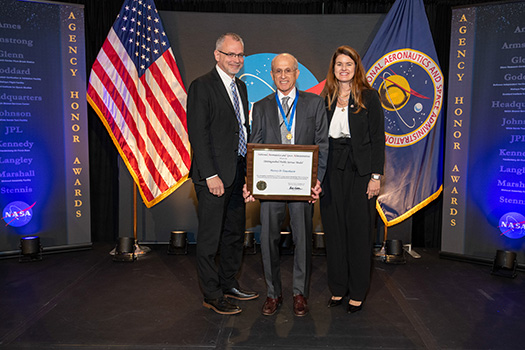
Dr. Harvey Tananbaum receiving the NASA Distinguished Public Service Medal
Credit: NASA/Glenn Research Center
On March 28, 2024, Harvey Tananbaum was awarded the NASA Distinguished Public Service Medal during a ceremony at the Glenn Research Center in Cleveland, Ohio.
Dr. Tananbaum was recognized for his distinguished career that has made X-ray astronomy a bedrock observational discipline for the advancement of astrophysics, and his leadership in NASA X-ray space telescopes like the Chandra X-ray Observatory made NASA the world leader in X-ray astronomy missions.
The citation for this award highlights his “outstanding contributions to NASA’s science mission through key roles in pioneering X-ray astronomy missions that have revolutionized our understanding of the universe.”
Shown left to right in this photo: James Free (NASA Associate Administrator), Harvey Tananbaum (SAO/CXC), Casey Swails (NASA Deputy Associate Administrator)
- Megan Watzke
Chandra Enters Through the Sidedoor (Podcast)
Submitted by chandra on Wed, 2024-05-29 16:13Did you know that the Smithsonian has a podcast? It’s called Sidedoor and it gives listeners a behind-the-scenes look into the Smithsonian’s museums and research units. One of those research units is the Smithsonian Astrophysical Observatory, which has run NASA’s Chandra X-ray Observatory since before launch and continues to control its flight and science operations to this day.
On the latest episode of Sidedoor, Dr. Kimberly Arcand (Chandra’s visualization scientist and emerging tech lead), along with Dr. Priyamvada Natarajan (astrophysicist, and professor at Yale University) and Dr. Arthur I. Miller, (scientist and author), discuss black holes and the connection to Dr. Subrahmanyan Chandrasekhar, the namesake of the Chandra X-ray Observatory. Listen to the first installment of this two-part journey through the cosmos at https://www.si.edu/sidedoor/cosmic-journey-i-stellar-buffoonery
New Version of Chandra Source Catalog Released
Submitted by chandra on Mon, 2024-04-22 15:21The Chandra Source Catalog (CSC) is the definitive catalog of X-ray sources detected by the observatory. The latest version, known as CSC 2.1, was released in early April 2024.
Since the Uhuru satellite in the 1970s, X-ray astrophysics missions have a tradition of publishing detailed catalogs of the X-ray sources detected along with a list of key physical properties.
CSC 2.1. carries this tradition forward. Below is an adapted announcement from members of the team who worked on this important resource for the scientific community:
The Chandra X-ray Center (CXC) is pleased to announce the availability of Release 2.1 of the Chandra Source Catalog (CSC 2.1). This catalog covers roughly 730 square degrees of sky and contains 407,806 unique X-ray sources and over 1.3 million individual source detections identified in more than 15,000 Chandra imaging observations released publicly prior to the end of 2021.
Chandra and Voyager: A Robust 3D Experience
Submitted by chandra on Wed, 2024-04-17 17:18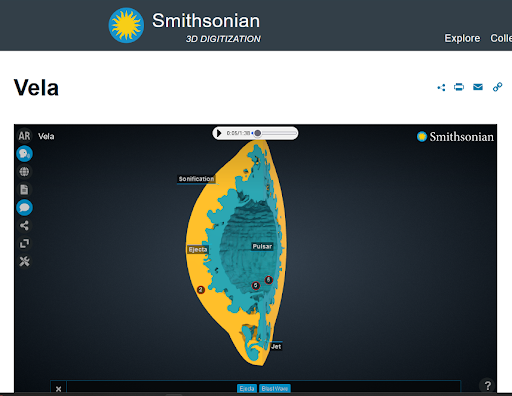
A screenshot from the Smithsonian Voyager 3D platform: Vela Pulsar is shown here with its ejecta and blast wave turned on. Explore the Vela sonification and visual description tour while tumbling around the 3D model and turning the ejecta and blast wave on and off. Download an stl model for 3D printing to hold the Vela Pulsar in your hand.
Credit: INAF-Observatorio Astronomico di Palermo/S.Orlando & NASA/CXC/SAO/A. Jubett et al; Smithsonian Institution/J. Cope, M. Dattoria et al;
The creative team at Chandra X-ray Center has been hard at work on a collaboration with the Smithsonian Institution’s Digitization Program Office (3D SI). Together, our teams have been bringing three-dimensional X-ray datasets to the Voyager platform to offer inclusive, multi-sensory learning experiences.
The Chandra X-ray Observatory is one of NASA's “Great Observatories” (along with the Hubble Space Telescope and the James Webb Telescope). Chandra, the world's most powerful X-ray telescope, is still going strong after 25 years in orbit. The Smithsonian Astrophysical Observatory (SAO) in Massachusetts operates the telescope and runs the science center on behalf of NASA.
In 2021, Chandra and 3D SI released a collection of cosmic models showing various high-energy phenomena in three dimensions including novas, supernovas, pulsars, and the Chandra telescope itself. These 3D representations provided the opportunity for users to tumble around each object and learn about its features and the science behind the model. This has been a huge step in granting greater access to these incredible 3D models and prints for institutions like libraries and museums, as well as the scientific community and individuals in the greater public.
Pages
Please note this is a moderated blog. No pornography, spam, profanity or discriminatory remarks are allowed. No personal attacks are allowed. Users should stay on topic to keep it relevant for the readers.
Read the privacy statement


